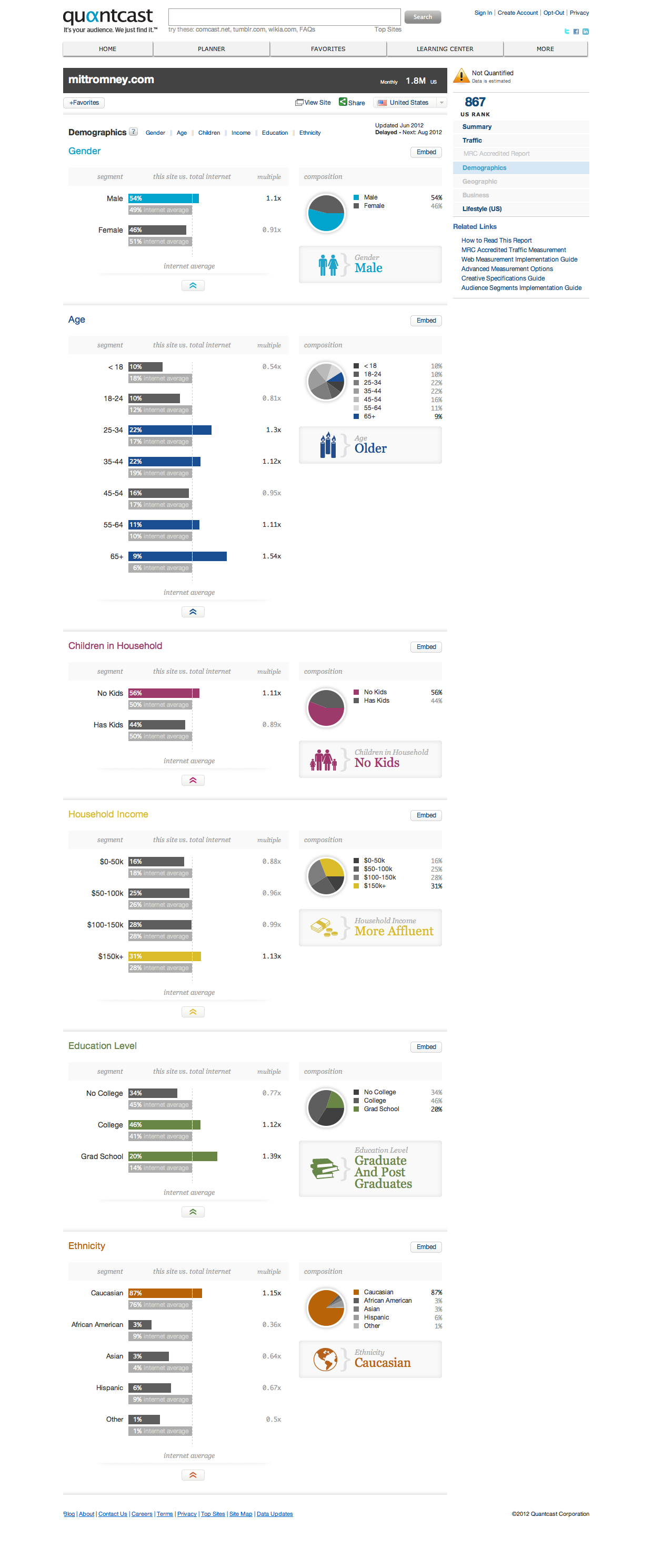Brands
Presidential Campaign Report: How Much Does a Website Reveal?
As part of the Content Campaign ’12 Series, The Content Strategist examines the content published by the presidential campaigns as part of their strategy to win November’s general election.
 Presidential opinion polls are often tricky to understand because they rely on subjective measurements. Content strategist Marko Hurst believes gauging the candidates’ websites is less amorphous.
Presidential opinion polls are often tricky to understand because they rely on subjective measurements. Content strategist Marko Hurst believes gauging the candidates’ websites is less amorphous.
With enough data he says he can measure anything — including the effectiveness of presidential campaign content.
For this week’s Content Campaign ’12 Series installment, Hurst, a principal at strategic consulting firm Content Analytics, analyzed the health care sections of Barack Obama and Mitt Romney’s websites.
He compared the term “health care” because of its prominence in this election and because it’s not a branded term like ObamaCare or Medicare. In order to extract meaning from this comparison, Hurst ran a number of algorithms on open, third-party data available about the candidates’ sites, such as Quantcast to learn demographics and Google Trends to find online search trends
While Hurst uncovered a great deal from these exercises, the results can never compare to the discoveries possible using proprietary data, particularly the candidates’ own data measured against their personal strategies for their websites.
“If you have your own set of data, business intelligence, analytics, marketing, sales, etc,” Hurst said, “you can build out a full measurement program that can help an organization make data-informed decisions about content, user experience, research, ROI, budgeting, and more.”
Given what he was able to access in this situation, Hurst, who is the former content strategy director at Huge, was able to make a “baseline comparison” of the candidates’ relative success on multiple fronts, including page design, search engine optimization and audience.
We’ve included some of Hurst’s analyses below.
Page design
Obama:
Romney:
Winner: Romney
Using Attention Wizard and its eye-tracking algorithm, Hurst determined, with greater than 75 percent accuracy, where viewers’ eyes would go in the first five seconds of looking at these pages. Warmer colors show where viewers would pay more attention.
According to Hurst’s analysis, the main focal points on Obama’s page are on videos and images, with the warmest color currently on a little girl’s face — not the headlines or content. But without knowing completion rates — who is actually watching these videos all the way through — you “can’t tell if Obama’s message is getting out there.”
Near the focal points on his health care page, Romney places data points about why his plan is better. Hurst says placing data points in these very visible areas is an effective way to get viewers to remember your message.
Search Engine Optimization
Obama:
Romney:
Winner: Obama
Overall both pages rated excellent (A+) for using best practices in search engine optimization, according to page reports by SEOmoz. Obama’s health care page comes up on the second page of a Google search for the term “health care.” Romney’s is on the fourth.
According to Hurst, for a non-branded term like health care, where there’s lots of competition from other websites, these page rankings are “very good.”
However, according to SEOmoz, Obama’s health care page ranks as the 139th top page on BarackObama.com, while Romney’s equivalent page ranks second on his main page.
Hurst said he couldn’t be certain of the reason without more data but said it could have to do with Obama’s site having multiple health care pages or different the candidates’ different audiences.
Audience
Obama:
 Romney:
Romney:

Winner: It depends on the target audience
Hurst used Quantcast to measure the demographics of the candidates’ audiences, which it compared against the internet average demographics for North America. Obama’s website has much higher percentage of females and African Americans, whereas Romney’s dominates in the area of Caucasian males.
Perhaps surprisingly, considering how well Obama did with the youth vote in the last election, the number of younger people going to his site is below average.
But these are only findings the public can glean from readily available information. It pales in comparison to the revelations the campaigns can discover from mining the analytics on their sites.
Get better at your job right now.
Read our monthly newsletter to master content marketing. It’s made for marketers, creators, and everyone in between.




